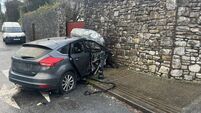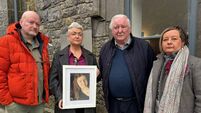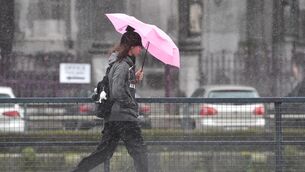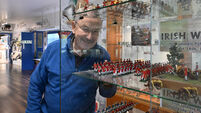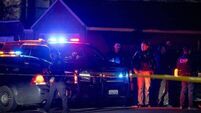Michael Collins centenary: Everything you need to know about the Béal na Bláth event
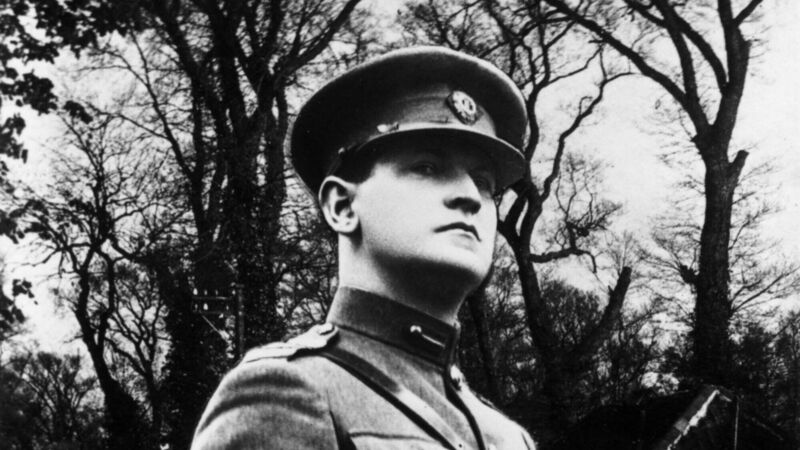
1922: Irish soldier and politician Michael Collins (1890 - 1922), whose high level involvement with Sinn Fein and the IRA led to his taking part in the peace treaty negotiations between Britain and Ireland in 1921. He was killed in an ambush in County Cork on 22nd August 1922. (Photo by Hulton Archive/Getty Images)
The organisers of the Michael Collins centenary commemoration hope their decision to invite the first Fianna Fáil Taoiseach to address the event will help heal the wounds of the past.
Former Fine Gael city councillor, Laura McGonigle, a member of the Michael Collins Commemoration Committee, made the comment as details of the major event and traffic management plan were finalised to cope with the several thousand people who are expected to attend the event at the Béal na Bláth ambush site in West Cork on Sunday.
“When we look to identify speakers, we would like to think that we try to look for people who have a positive outlook on Ireland’s future,” Ms McGonigle said.
“Our ambition this centenary year was to be magnanimous and take a step closer to reconciliation.
“It was a big step for us to invite both the Taoiseach and the Tánaiste. Micheál Martin will be the first ever Fianna Fáil Taoiseach to give an oration here. But we felt it appropriate to be so inclusive. There is symbolic value in that.
“They (Mr Martin and Leo Varadkar) are living examples of people who previously had differences and who have set them aside to work together and that is exactly what Collins was trying to achieve. We are always trying to heal the wounds of the past.”
Ms McGonigle said the committee has spent months liaising with gardaí, Cork County Council, the civil defence, the HSE, and local groups to ensure that Sunday’s event runs as smoothly as possible.
But she stressed the rural setting and the limitations of the site to cater for large crowds.
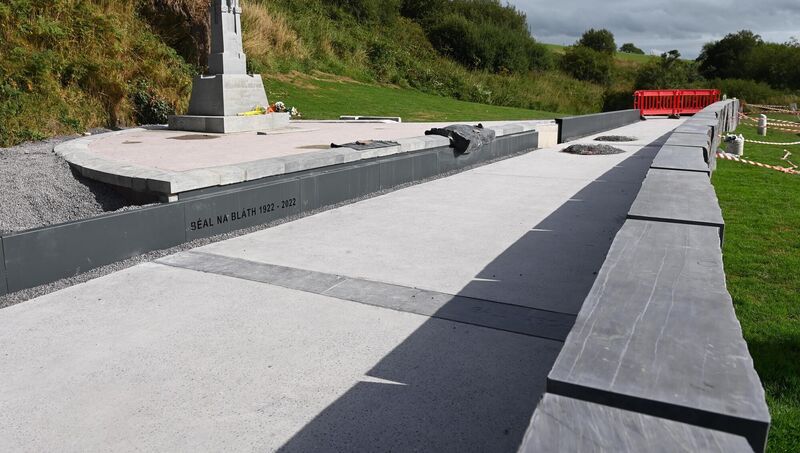
Plans are in place for crowds of up to 5,000 people — the estimated crowd size which attended the 90th-anniversary commemoration. But it was reported by the then Cork Examiner in 1972, that up to 10,000 people attended the 50th-anniversary commemoration event.
Ms McGonigle said because it’s not a ticketed event, it’s difficult to predict this Sunday's crowd size and she encouraged anyone who is considering attending to consider carefully its rural setting and limitations.
The road leading to the ambush site, from the Diamond Bar junction to Newcestown Cross, will be temporarily closed on Sunday, with designated parking zones located up to one kilometre away.
People planning to attend have been encouraged to carpool, to be parked up to 90-minutes before the 3pm ceremony, to expect to have to walk up to one kilometre from their parking zone to the ambush site, and to then be prepared to stand for the duration of the event.
“If you couldn’t stand on the bank of a pitch for a country championship match, maybe give consideration to watching the proceedings live from comfort of your own home,” she said.
A temporary road closure will be in operation on the road leading to and from the monument at Béal na Bláth from early on Sunday morning.
There will be strictly no vehicular access and no parking at the monument, or on any of the approach roads to the monument.
While the ceremony is due to start at 3pm, those attending have been advised to have their cars parked at the designated parking sites by 1.30pm.
Those attending have been advised to expect a walk of almost one kilometre to the monument site.
No seating will be provided at the monument site itself. People attending will be expected to stand for several hours.
Organisers have advised people to wear appropriate footwear, to dress appropriately for the weather, and to bring water.
Cars travelling from the south and west, and motorists travelling through Macroom, should arrive via Kilmurry.
They will be directed to parking in pitches and fields nearby.
Organisers say the parking will be well signposted.
Parking is limited and people are strongly encouraged to carpool.
A park and ride facility will be in operation on the day for those travelling from the north and east of the country, via the N22.
The bus will operate from Crookstown village, in the field opposite the post office, and will transport people to within a few hundred metres of the ambush site.
Gardaí and stewards will be there to direct cars and to control parking.
Toilet facilities will be provided, with portable toilets set up close to the ambush site.
The commemoration will be broadcast live on the RTÉ News channel.
Meanwhile, Minister of State, Patrick O’Donovan, said he believes the state has failed to fully commemorate Collins' memory and legacy, and that it's time for the political leadership to approve a national commemorative statue of Collins in Dublin.
"The time for such a national statue is long overdue. Approving it now would be a true sign of reconciliation," the minister with responsibility for the Office of Public Works (OPW), said.
"If we haven’t the maturity 100 years later to deal with Collins' legacy, that says more about the state.
"I believe that over the last 100 years, the state hasn’t looked back at Collins' life in a way that it should have, and to do it in a way of scale.
"It has been left it to local volunteers, local groups, and to academics to debate it in lecture theatres, and I don't believe that's good enough. It's pathetic really.
"It's time for a statue of Collins in Dublin, the capital city, where he put his reputation on the line and argued his case.
“I know of nowhere in the democratic world, certainly where a leader of a democratic nation is assassinated, and there is no national commemoration to him. It happens in all democratic countries across the world. And in my view, as Minister of for the OPW, it should happen here."
While there is a landmark statue of Collins in Clonakilty, unveiled by Oscar-winning actor Liam Neeson in 2002, it was not a state-sponsored project.
There are several existing representations of Michael Collins in State ownership, including the iconic three-quarter length portrait painted by renowned artist Leo Whelan in the entrance hall to Leinster House.
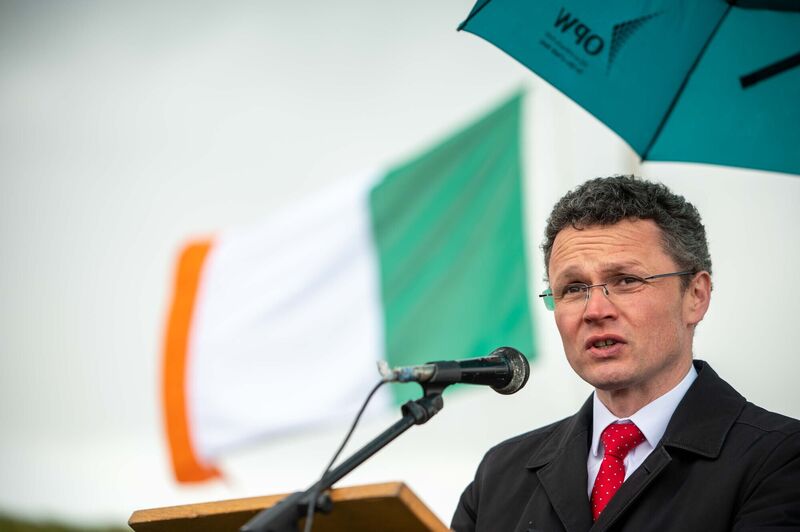
There is another representation of Collins on view in the environs of Leinster House.
His portrait accompanies those of Arthur Griffith and Kevin O’Higgins on the base of the cenotaph, a tall Wicklow granite obelisk, which is located centrally on Leinster Lawn.
The cenotaph completed in 1950, was designed by OPW architects Raymond McGrath and Frederick Du Berry, and the three portraits on its base were created by sculptor Laurence Campbell.
There are a number other portraits of Michael Collins in the State’s collection, including the painting by Sarah Cecilia Harrison which hangs in the Taoiseach’s office, the small full length bronze figure by Eamonn O’Doherty which is in Dublin Castle and a portrait drawing by Angie Shanahan which is in government buildings.
There are also other sculptural representations of Michael Collins in the State Art Collection by sculptor Albert Power.
Collins’ role as finance minister has been commemorated by the issuing of a coin by the Central Bank, and his role as a post office clerk has been commemorated by the issuing of a stamp by An Post this week.






